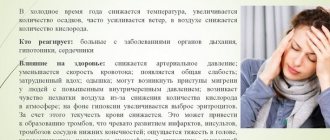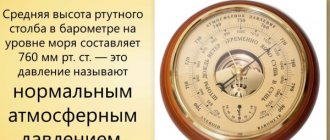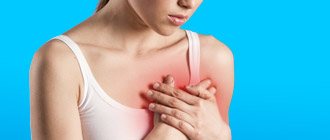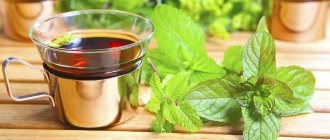Weather dependence is called the sixth sense
First, let's dispel the doubts of skeptics. Weather sensitivity is not an invention of muslin young ladies. This has been confirmed by science: in people who are sensitive to weather changes, the level of leukocytes in the blood increases on such days. And medical statistics have recorded: more than 60% of city residents over 28 years of age react to bad weather. The proportions are as follows: there are one and a half times more representatives of the fairer sex who sense the approach of an atmospheric front than the stronger sex.
Young children are distinguished by the most subtle sensitivity. Mothers of infants notice that babies begin to cackle as soon as the weather changes.
Artificial respiration
Artificial respiration is used in cases where a person stops breathing, but the heart continues to beat. This happens in drowned people, in people struck by electric current, poisoned by gases, etc. In these cases, with the help of artificial respiration, it is possible to resume the activity of the respiratory center and save a person from death. In practice, there were cases when normal breathing was restored after 4-6 hours of artificial respiration.
The most common are two methods of artificial respiration.
First way:
breathing from mouth to mouth. A piece of gauze or a thin handkerchief is placed over the victim’s mouth and the person providing assistance, pressing his lips to the victim’s lips, exhales forcefully into his mouth. Exhaled air enters the lungs and inflates them. The exhaled air contains about 17% oxygen, which is enough to saturate hemoglobin with oxygen, and a high percentage of carbon dioxide (3) prevents carbon dioxide from leaving the blood, as a result its concentration in the blood of the person being rescued increases and excites the respiratory center.
Second way:
expansion and compression of the chest.
Two techniques are widely used.
First appointment (Fig.)
: The patient is placed on his back with his head slightly thrown back. His hands are taken below the elbow and pressed against the chest for 2 seconds, thereby reducing its volume and expelling air from it; This is how you exhale, exhalation is followed by inhalation; it is achieved by moving the arms upward in a circular motion. The duration of artificial inspiration is 3 seconds.
Second reception (Fig. 2)
: The patient is placed face down with his head turned to the side. The person performing artificial respiration kneels so that the patient’s torso is between them. Exhalation is achieved by applying strong pressure with the palms and the entire weight of the body on the lower part of the chest. Inhalation is done passively, since when the pressure stops, the chest expands, returning to its original position.
Article on the topic Breathing in different conditions
Manifestations of weather dependence
Patients with diseases of the bronchi and lungs, asthmatics, arthritis sufferers, and hypertensive patients can accurately predict bad weather. If the temperature outside the window and atmospheric pressure immediately decrease, they expect their condition to worsen, complaining of pain in the joints and stiffness in movement.
Cores can compete with the hydrometeorological center in the accuracy of forecasts. A couple of hours before the weather changes (and it could even be a change in the direction of the wind), they complain of headaches, weakness, anxiety, joint pain, and angina attacks. The hardest days for them are those with high air humidity and when a thunderstorm is approaching.
Heart crises, as ambulance workers note, occur at times of pronounced activity of the geomagnetic field and magnetic storms. A sick heart also reacts to periods of high sun activity.
The state of health these days deteriorates in those suffering from vegetative-vascular dysfunction (previously this disease was called vegetative-vascular dystonia), gastritis, patients with pneumonia, pyelonephritis, eczema. People with mental problems have another influencing factor - lunar tides.
In principle, any chronic responds to bad weather, doctors say.
Why do vessels feel the wind?
And how are rain and the heart connected? Many situations are explained by elementary physics and simple physiology. Thus, when atmospheric pressure drops, the pressure in the vessels decreases and the speed of blood flow decreases. Gases form in the intestines. They expand the abdominal cavity and accordingly raise the diaphragm, the result is that it is difficult to breathe, the heart and blood vessels experience a lack of oxygen. If the atmospheric pressure rises, then the pressure in the vessels increases accordingly and the speed of blood flow increases, which also causes discomfort.
When there is a strong wind, it is more difficult for us to breathe - and the oxygen content in the blood naturally drops. Also, degrees outside the window and changes in atmospheric pressure affect the activity of some enzymes. Scientists say that in anticipation of an upcoming downpour, hail, hurricane, pressure surges or sudden warming or cold weather, a person’s defense system is triggered: hormonal levels, enzyme activity, platelet content and blood clotting indicators change.
But in principle, one cannot talk about the influence of one weather factor. As a rule, they act together on our well-being. And you can derive such formulas. Cold wind plus high atmospheric pressure equals excess oxygen and vasospasm. Low atmospheric pressure plus high humidity, high (or low) temperature equals a lack of oxygen and heaviness in the head.
Manifestations of weather dependence include fluctuating blood pressure, rapid pulse, shortness of breath, fever, sleep problems, dizziness, headaches, joint pain, cramps, weakness, fatigue, apathy, drowsiness, chills, bad mood, absent-mindedness, and memory problems.
The most critical situations for a weather-dependent person are a sharp drop or rise in atmospheric pressure, a temperature difference outside the window of 8 degrees or more for 48 hours. But in fact, there are no more than two dozen truly difficult days for well-being a year. Once every five to six days a person may react to the weather with a slight deterioration in health.
Breathing at low atmospheric pressure
A person finds himself in conditions of reduced atmospheric pressure when ascending to a height (climbers, pilots when the cabin is depressurized, parachutists).
Conditions of low pressure at altitude are reproduced in pressure chambers, from which the required amount of air is pumped out. Similar changes are also created when breathing gas mixtures with a reduced oxygen content.
The main consequence of a decrease in atmospheric pressure is hypoxia, which develops due to the low partial pressure of oxygen in the inhaled air.
Ascent to a height of 1.5-2 km above sea level is not accompanied by a significant decrease in the body's oxygen supply and changes in respiration. At an altitude of 2.5-5 km, an increase in pulmonary ventilation occurs, caused by stimulation of carotid chemoreceptors. At the same time, blood pressure rises and heart rate increases. These reactions are aimed at increasing the supply of oxygen to tissues; they partially compensate for the reduced partial pressure of oxygen.
An increase in pulmonary ventilation at altitude can also have a negative effect on breathing, as it leads to a decrease in the partial pressure of carbon dioxide in the alveolar air and its removal from the blood. As a result, at low atmospheric pressure, hypoxia is combined with hypocapnia. With hypocapnia, stimulation of chemoreceptors, especially central ones, is weakened, which limits the increase in ventilation of the lungs.
With a further decrease in atmospheric pressure, at an altitude of 4-5 km, high-altitude (mountain) sickness develops: weakness, cyanosis, decreased heart rate, blood pressure, headaches, and the depth of breathing decreases. At altitudes above 7 km, loss of consciousness and life-threatening breathing and circulatory disorders can occur.
A particularly high danger is the rapid development of hypoxia. At the same time, a person does not have unpleasant sensations associated with hypoxia, there is no feeling of anxiety and danger. Loss of consciousness may occur suddenly.
Breathing pure oxygen through a mouthpiece or mask allows a person to maintain normal performance at an altitude of even 11-12 km. When climbing to high altitudes, even when breathing pure oxygen, its partial pressure in the alveolar air is significantly lower than normal. Therefore, flights into the stratosphere are possible only in pressurized cabins or spacesuits in which sufficiently high atmospheric pressure is maintained.
Resistance to hypoxia has large individual differences. Thus, some people develop altitude sickness at an altitude of 2.5 km. Resistance to hypoxia can be significantly increased by training in a pressure chamber, which allows you to maintain performance at an altitude of 7000 m.
Long stays in conditions of low atmospheric pressure and life in mountainous areas are accompanied by acclimatization to oxygen starvation. The latter is due to a number of factors:
- an increase in the number of red blood cells in the blood due to increased erythropoiesis;
- an increase in hemoglobin content in the blood and, consequently, an increase in the oxygen capacity of the blood;
- increased ventilation;
- acceleration of oxyhemoglobin dissociation in tissue capillaries due to a shift of the oxyhemoglobin dissociation curve to the right caused by an increase in the content of 2,3-glycerophosphate in erythrocytes;
- an increase in the density of blood capillaries in tissues, an increase in their length and tortuosity;
- increasing the resistance of cells, especially nerve cells, to hypoxia, etc.
Periodic breathing. This type of breathing is characterized by periodic changes in breathing frequency. Thus, breathing can be observed with periodic increases and decreases in depth (wave-like breathing). With greater severity of such periodic breathing, groups of respiratory movements are separated from each other by pauses - periods of apnea lasting 5-20 s. After a pause, weak respiratory movements occur, they gradually intensify to a maximum, and then weaken. A new pause begins (Fig. 164). This breathing is called Cheyne-Stokes breathing.
The duration of the cycle of such breathing can be 20-60 seconds.
Cheyne-Stokes breathing is observed with altitude sickness, sometimes during sleep, and also in premature infants. The main condition for the occurrence of periodic breathing is a decrease in the excitability of the neurons of the respiratory center due to hypoxia or influences coming from the overlying parts of the brain. also contributes to the occurrence of Cheyne-Stokes respiration . Under these conditions, the activity of the respiratory center is largely determined by the oxygen content in the arterial blood. The occurrence and intensification of breathing after a pause is caused by excitation of carotid chemoreceptors due to lack of oxygen. When the degree of hypoxemia decreases as a result of increased ventilation, breathing weakens and temporarily stops.
This is facilitated by a decrease in the tension in the blood of carbon dioxide, which is excreted during the period of increased breathing. When the degree of hypoxemia increases again and the oxygen dioxide tension in the blood increases, gradually increasing breathing reappears.
Intermittent breathing usually changes to normal breathing when breathing oxygen with the addition of 5% carbon dioxide.
Drugs for weather dependence
- These days, you should not skip taking medications. With your doctor's permission, you can increase the dose or take a stronger medicine.
- It is believed that weather dependence makes itself felt only when the immune system is weakened or when there is illness. Therefore, heal to the end, strengthen and boost your immune system with simple measures - a contrast shower, proper nutrition, moderate physical activity, spending time in the fresh air, proper sleep and wakefulness, and auto-training techniques.
- For some, vitamins and minerals, antioxidants, and so-called plant adaptogens (including tinctures of ginseng, eleutherococcus, lemongrass, and aralia) help on difficult days . But the last recommendation is not suitable for hypertensive patients.
- And another piece of advice - don’t focus on the weather : if you think, “This hurricane will make me feel bad,” so it will be. Remember that our body easily adapts to any climate, it is not for nothing that residents of the far north do not react so sharply to strong winds, high humidity, periods of prolonged cold, and those who live in the sultry south breathe dry air easily and do not feel high levels of radiation, accustomed to low humidity and eternal heat. By the way, paradoxically, the weather is the best immunity trainer.
If you still have questions, you can ask your therapist online in the Doctis application.
Lower blood pressure with 5-minute breathing exercises
Five-minute breathing exercises using a special technique can lower blood pressure and improve cardiovascular performance at least as well as aerobic exercise or antihypertensive drugs.
The results of the work from a team of authors from the University of Colorado were published in the Journal of the American Heart Association.
There are many different lifestyle strategies available for non-drug treatment of hypertension, but they often require a long time or may be difficult to afford.
The technique described in the study is inspiratory muscle strength training (IMST), which can be done at home for 5 minutes. The technique was originally developed in the 1980s as an aid for critically ill patients who needed strengthening of the diaphragm and other breathing muscles. CMTV involves inhaling forcefully through a hand-held device that provides resistance to the inhaled air. As a clear example, we can imagine inhaling air through a tube in which air is sucked back in.
The study included 36 volunteers with high blood pressure (BP) over 120 mmHg aged 50-79 years. Half of them performed CMTV exercises (30 inhalations per day at a high level of resistance for 6 days a week), the other half participated as a control group, the protocol of which used significantly less inhaled air resistance.
After 6 weeks, the CMTV group experienced an average 9 mm Hg reduction in systolic blood pressure, a blood pressure reduction that can usually be achieved with aerobic exercise (eg, 30-minute walks 5 times a week) or with the use of certain antihypertensive medications. The effect persisted even after stopping training after 6 weeks. Also in the study group, there was a 45% improvement in endothelial function (the ability to expand in response to appropriate stimulation), a significant increase in nitric oxide levels, which is central to vascular dilation, and a decrease in inflammation and oxidative stress.
The mechanisms that explain this phenomenon are not yet well understood, but the study authors suggest that forceful breathing forces the vascular endothelium to produce more nitric oxide.
Thus, researchers from Colorado have presented a simple and affordable non-drug method for lowering blood pressure. The National Institutes of Health (NIH) will provide funds to continue this study in a larger sample (100 people) over a 12-week comparison with an aerobic exercise program. The work will further investigate the effectiveness of the technique, as well as its safety.
Source: Craighead DH et al. Time?Efficient Inspiratory Muscle Strength Training Lowers Blood Pressure and Improves Endothelial Function, NO Bioavailability, and Oxidative Stress in Midlife/Older Adults With Above?Normal Blood Pressure //Journal of the American Heart Association. – 2021.










